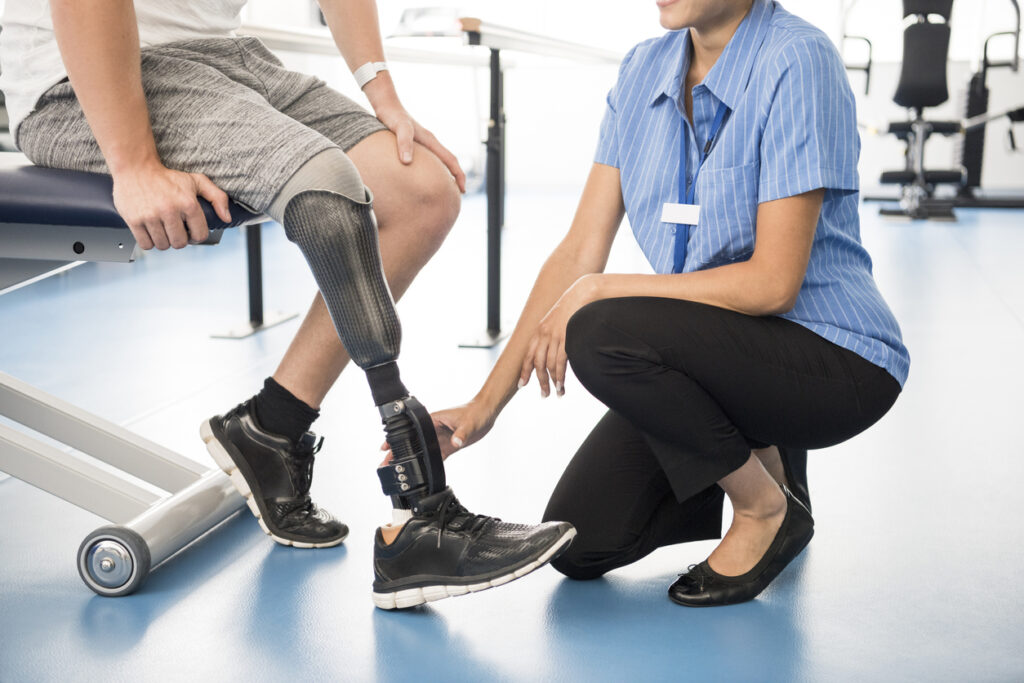Phantom pain is a complicated and perplexing phenomena that has long perplexed both medical professionals and those who have experienced it. It is the feeling of pain or discomfort in a bodily part that has been amputated or is no longer physically present. While it may appear to be an odd and impossible idea, phantom pain is a genuine medical ailment that affects a considerable number of people who have had amputations or have lost a bodily part due to injury or sickness. This article will look at the nature of phantom pain, its potential origins, and the therapeutic options accessible to individuals who experience it.
Understanding Phantom Pain
 Phantom pain is neither a fiction of the imagination or a psychiatric expression, but rather a true physical feeling felt by people who have had limbs amputated. It is believed that up to 80% of amputees suffer phantom pain, however the degree and frequency varies widely across individuals. The pain is frequently characterized as throbbing, scorching, shooting, or cramping, and it can last minutes, hours, or even days.
Phantom pain is neither a fiction of the imagination or a psychiatric expression, but rather a true physical feeling felt by people who have had limbs amputated. It is believed that up to 80% of amputees suffer phantom pain, however the degree and frequency varies widely across individuals. The pain is frequently characterized as throbbing, scorching, shooting, or cramping, and it can last minutes, hours, or even days.
Causes of Phantom Pain
The precise causes of phantom pain are unknown, and experts are now investigating many possibilities to explain this baffling illness. According to one commonly recognized explanation, phantom pain is caused by the neural system rewiring that occurs after limb loss. When a limb is amputated, the neuronal connections in the brain that used to receive sensory information from that limb are disturbed. As a result, in an attempt to reconcile the discrepancy between the body’s actual condition and the neuronal circuitry, the brain may create misleading pain signals.
Another idea contends that phantom pain is caused by the brain’s attempt to adapt and restructure following amputation. The brain’s capacity to reorganize itself and form new connections is referred to as neuroplasticity. The rearrangement of brain networks is thought to cause signal misinterpretation and pain perception in the missing limb.
Treatment Options for Phantom Pain
 Managing phantom pain can be difficult since there is no one-size-fits-all solution. Several therapy alternatives, however, have shown promise in relieving the suffering associated with phantom pain. These are some examples:
Managing phantom pain can be difficult since there is no one-size-fits-all solution. Several therapy alternatives, however, have shown promise in relieving the suffering associated with phantom pain. These are some examples:
Drugs: To assist minimize phantom pain, several drugs such as antidepressants, anticonvulsants, and opioids may be administered. These drugs function by affecting the neurological system and changing the way people perceive pain.
Mirror treatment: Mirror treatment is a non-invasive procedure that creates the appearance of mobility in the missing limb by reflecting the intact limb. By retraining the brain and reinstating the sense of normal movement, this visual feedback can help reduce phantom pain.
TENS (Transcutaneous Electrical Nerve Stimulation): TENS uses modest electrical impulses to stimulate the skin surrounding the residual limb. These impulses have the potential to interrupt pain signals and give brief respite from phantom pain.
Cognitive-Behavioral Therapy (CBT): Cognitive-Behavioral Therapy (CBT) is a type of psychotherapy that focuses on recognizing and modifying negative thinking patterns and behaviors. It can help people manage phantom pain by teaching them coping skills, relaxation methods, and ways to reframe their sense of pain.
Virtual reality therapy: This a new therapeutic method that employs immersive virtual worlds to distract the brain from phantom pain. Individuals can have decreased pain perception by activating their senses in a virtual world.
Supportive Care: Emotional assistance, psychotherapy, and peer support groups can all play an important part in assisting people to cope with phantom pain. Sharing one’s own experiences, learning from others, and receiving affirmation may all help to bring understanding and confidence.
Finally, phantom pain is a real medical problem that affects many people who have had amputations. While the precise causes are unknown, experts have presented suggestions relating to nervous system remodeling and brain adaption mechanisms. Although treating phantom pain can be difficult, different techniques, such as medicines, mirror therapy, TENS, CBT, virtual reality therapy, and supportive care, give hope for controlling and reducing the suffering associated with this illness. Further study and advances in understanding the underlying mechanics of phantom pain will almost certainly result in better therapeutic choices in the future.


